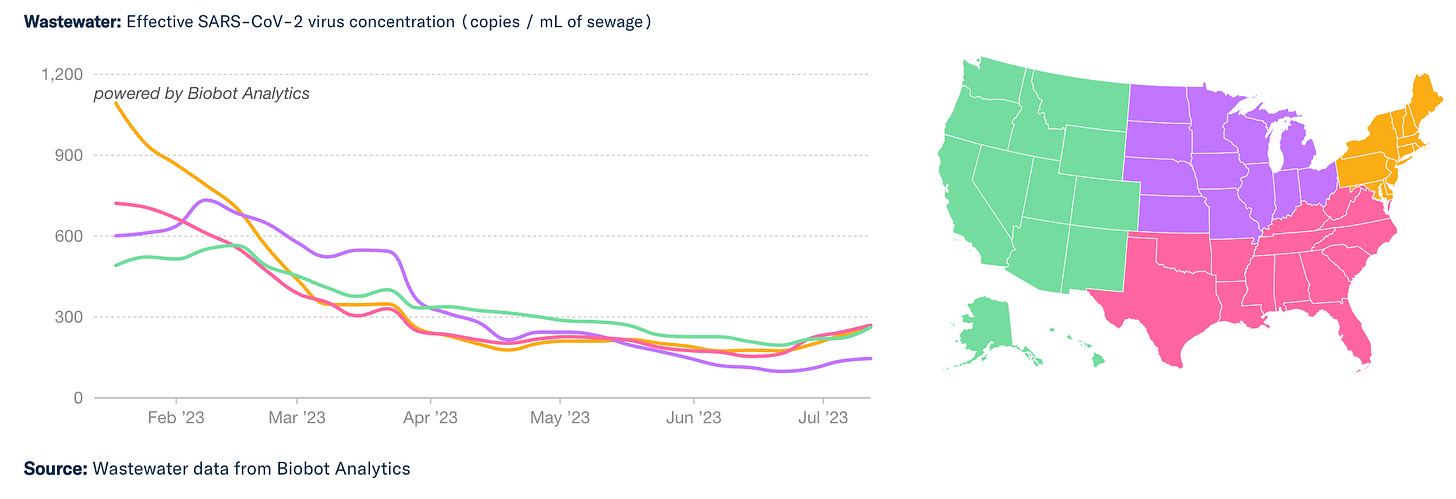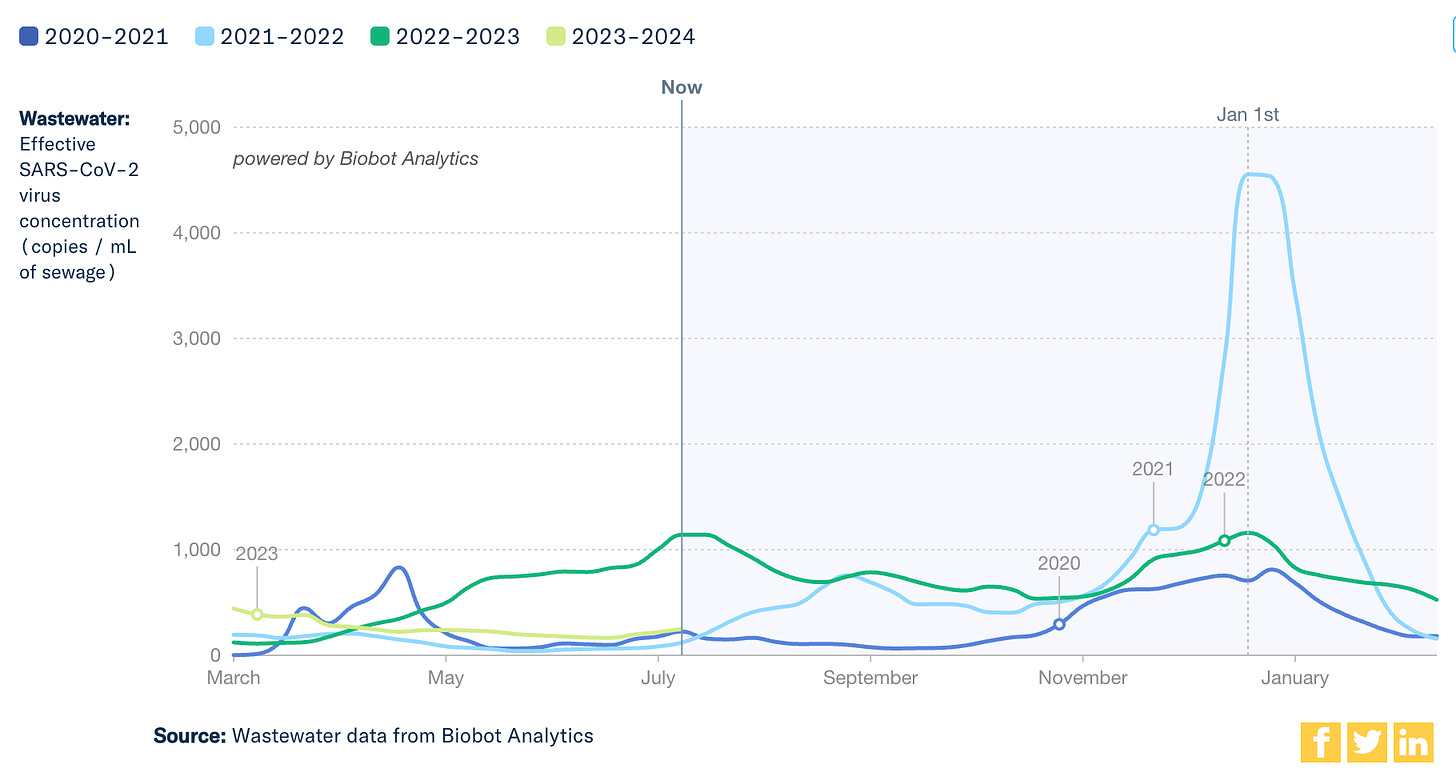Hits: 132
I wrote two weeks ago that mid-summer often marks the beginning of a new Covid-19 wave, and that those often start in the South.
Well, I have new news. Biobot wastewater data show an increase in the Southern, Northeastern and Western regions.
Deep dive: State level data is quite messy, and wastewater data providers don’t tell exactly the same story—WastewaterSCAN and NWSS do not show as much of an increase in activity as Biobot. Still, because this is pretty much exactly what I was expecting in terms of summer epidemiology, I think it’s likely a real signal.
For my Canadian readers, there are no noticeable changes in wastewater trends right now.

Why do summer waves start in the South? The old chestnut is that it’s especially hot in the South, so people spend more times indoors with the air conditioning on, without good ventilation and filtration. This explanation gives me pause. The average American spends 90% of their time indoors.
I haven’t found a breakdown showing how that breakdown changes by region or by season, but it’s hard to believe it varies enough to explain the dynamics of a summer wave. In short, I’m content to say it’s still a scientific mystery why summer waves start in the South. If you have data I don’t know about, please send.
What it all means: Overall, the viral concentration in wastewater is still very low — about on par with April, and far, far below what we saw over the winter. Personally, I don’t plan to make any changes (yet) based on this information, other than to keep a closer eye on things. But I know some of my readers need or want to be extra cautious, so I wanted to let you know soonest.

This is not a great reference; it dates to 1989. I found several sources that newer cite survey data that also comes in around 90%, but they aren’t high quality sources. In any case, I think it’s safe to say that most people spend a huge majority of their time indoors.

